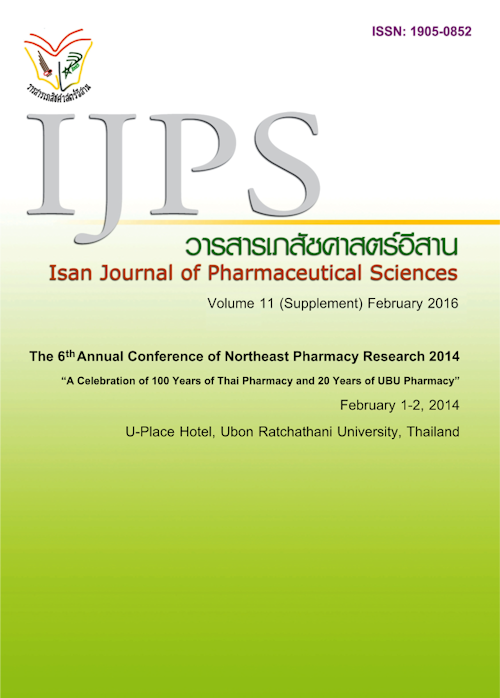Some Nutritional Information of Eatable Weaver Ant Eggs
Main Article Content
Abstract
Introduction: The weaver ant (Oecophylla smaragdina) is one of ant species commonly found in Asia and Australia. According to the Food and Agriculture Organization of the United Nations (FAO), the insect consumption can reduce the malnutrition in population of world because it has low fat with high protein and fiber (Inquisitr, 2013). In Northeast of Thailand, one of most popular local foods is weaver ant eggs because of favorite and always consumes in almost meal, and there are few studies about nutritional value of its eggs. Thus, the objective of this study is to determine some nutritional contents in weaver ant eggs which can be further developed for health supplement. Materials and Method: Weaver ant eggs were collected from Baan Fang district, Khon Kaen, Thailand in period of November, 2013 and used only its eggs for experiment. The moisture content, total solid, ash content, total fatty acid and some minerals were determined by using hot air method, gravimetric method, acid hydrolysis method, and Atomic Absorption Spectrophotometry (AAS). Results: Results in 100 g eggs were performed in this order, moisture content 77.7%; total solid 22.3%; ash 1.3%; total fatty acid 3.1%; Ca 0.0031%; K 0.002%; Fe 0.0033%; Cu 0.0011%; Zn 0.0023%. Conclusion: There is much nutritional information contained in weaver ant eggs. However, the more nutritional information of its eggs should be required to add on directions for further supplementary health food.
Article Details
In the case that some parts are used by others The author must Confirm that obtaining permission to use some of the original authors. And must attach evidence That the permission has been included


